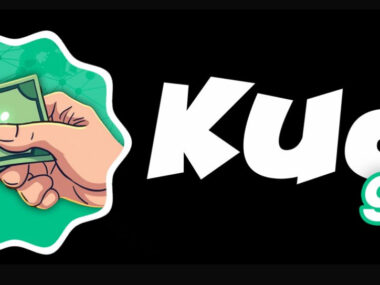Traditional theories of Economics often assume that individuals are rational decision-makers, consistently acting in their best interest to maximize utility and financial gain.
However, human behavior is far from predictable, and our decisions are often influenced by various psychological and emotional factors.
Behavioral economics is a field that seeks to understand how people make financial choices by exploring the impact of cognitive biases, emotions, and social factors on economic decision-making.
What is Behavioral Economics?
Behavioral economics is an interdisciplinary approach that combines insights from psychology and economics to analyze and predict human behavior in economic settings.
Unlike classical economics, which assumes that individuals make logical and consistent choices, behavioral economics acknowledges that people often deviate from rationality due to cognitive limitations and emotional influences.
For example, let’s consider the concept of “loss aversion.” Studies have shown that people feel the pain of a loss more intensely than the pleasure of an equivalent gain.
As a result, investors tend to hold onto losing stocks, hoping for a rebound, even if it is not the most rational course of action. This behavior can lead to missed opportunities and lower returns.
The Role of Cognitive Biases
One of the cornerstones of behavioral economics is the recognition of cognitive biases, which are systematic patterns of thinking that lead individuals to make decisions that deviate from rationality.
Some common cognitive biases include confirmation bias, where people seek information that confirms their pre-existing beliefs, and anchoring bias, where individuals rely heavily on the first piece of information encountered when making decisions.
For instance, when evaluating an investment opportunity, individuals may anchor their decision on the first piece of financial information they receive, such as the initial stock price.
This anchor can influence their perception of the investment’s value, leading to biased decision-making.
Prospect Theory: Understanding Decision-Making
Prospect theory is a fundamental concept in behavioral economics, developed by Daniel Kahneman and Amos Tversky. It posits that people’s decisions are not solely based on the final outcome but are influenced by the way choices are framed and perceived.
According to prospect theory, individuals are more sensitive to losses than gains, often leading to risk-averse behavior when faced with potential losses.
For example, consider two investment scenarios: Scenario A offers a guaranteed return of $500, while Scenario B involves a 50% chance of gaining $1,000 and a 50% chance of gaining nothing.
Even though the expected value of Scenario B is higher ($500), individuals may prefer the certainty of Scenario A to avoid the possibility of gaining nothing.
Nudging and Choice Architecture
Nudging is a concept in behavioral economics that involves subtly influencing people’s decisions without restricting their choices.
This approach leverages the power of choice architecture, which refers to how decisions are presented and organized. By making small adjustments to the presentation of options, policymakers and businesses can encourage certain behaviors without imposing strict rules.
For instance, a cafeteria might place healthier food options at eye level and less healthy options at the bottom of the display. This simple change in choice architecture nudges people towards healthier food choices without explicitly limiting their options.
Anchoring and Framing Effects
Anchoring refers to the tendency of individuals to rely heavily on the first piece of information encountered when making decisions.
In contrast, framing effects occur when the way information is presented (positive or negative) influences decision-making. Understanding these effects is crucial for businesses and marketers to influence consumer choices effectively.
For example, when pricing a product, companies can use anchoring by first presenting a higher-priced option, making the subsequent lower-priced option seem like a better deal.
Also, framing a discount as “50% off” rather than “50% saved” can impact how consumers perceive the value of the offer.
Loss Aversion and Endowment Effect
Loss aversion is the tendency of people to prefer avoiding losses over acquiring equivalent gains. This aversion to losses can lead to irrational decision-making, such as holding onto losing investments for too long. The endowment effect further amplifies this behavior, as individuals tend to place higher value on objects they own compared to identical objects they do not.
For example, if someone owns a rare collectible, they may be unwilling to sell it for its market value, as they attach a higher value to it due to ownership (endowment effect). However, if they were to buy the same collectible, they would likely be hesitant to pay a significantly higher price (loss aversion).
Mental Accounting and Sunk Cost Fallacy
Mental accounting is a phenomenon where individuals categorize and treat money differently based on its source or intended use. This can lead to suboptimal financial choices, as people may spend windfall gains more frivolously than money they have earned through hard work.
In addition, the sunk cost fallacy leads people to continue investing in failing ventures simply because they have already invested resources, even when it’s not in their best interest.
For instance, consider someone who wins money in a lottery. They might be more inclined to spend that money on luxury items since it is perceived as “extra” income (mental accounting) rather than adding it to their savings.
Similarly, in investing, individuals might hold onto a declining stock because they’ve already invested a significant amount, even when it’s clear that selling would be the wiser choice (sunk cost fallacy).
Hyperbolic Discounting and Self-Control
Hyperbolic discounting refers to the tendency of individuals to prefer immediate rewards over larger but delayed rewards. This behavior can lead to impulsive spending and poor long-term financial planning.
Understanding hyperbolic discounting is essential for promoting self-control and encouraging saving and investment for the future.
For example, when offered a choice between receiving $100 today or $150 in one month, individuals tend to lean toward the immediate reward, even though the latter option offers a higher return.
Social Norms and Herd Behavior
Human behavior is heavily influenced by social norms and the desire to conform to the actions of others.
In financial decision-making, herd behavior can lead to the formation of bubbles in markets, as individuals follow the actions of the majority without fully understanding the underlying value of assets.
For instance, during a stock market rally, individuals may feel compelled to invest heavily in a particular stock simply because everyone else is doing so, even if the fundamentals of the company do not justify such enthusiasm.
Emotional and Psychological Factors
Emotions play a significant role in financial decision-making. Fear and greed, in particular, can drive individuals to make rash choices, such as panic selling during a market downturn or engaging in speculative investments.
For instance, during a period of economic uncertainty, such as a recession, fear of further losses may lead investors to sell off their assets at a loss, contributing to a market downturn.
On the other hand, during a market boom, greed may drive individuals to take excessive risks in pursuit of higher returns, potentially exposing them to significant losses when the market corrects.
The Impact of Present Bias
Present bias refers to the tendency of individuals to prioritize immediate gratification over long-term goals. This bias often leads to poor financial choices, such as overspending on wants instead of saving for needs.
Addressing present bias requires strategies that align short-term desires with long-term objectives.
For example, many people struggle with saving for retirement because the rewards of saving (retirement funds) are distant, while the benefits of spending money on immediate desires are immediate and tangible.
Effective strategies to counter present bias include setting up automated savings plans and creating incentives for long-term saving, such as employer-matched retirement contributions.
Overconfidence and Confirmation Bias
Overconfidence leads individuals to overestimate their own abilities, which can result in excessive risk-taking and trading.
Note also that confirmation bias reinforces pre-existing beliefs, leading people to disregard contrary information. These biases can be detrimental to financial decision-making and require awareness and discipline to overcome.
For instance, overconfident investors may believe they possess unique insights into the market and make speculative trades based on their gut feelings, without conducting thorough research.
Confirmation bias may lead them to selectively seek out information that supports their investment decisions while ignoring warning signs.
How Behavioral Economics Affects Financial Choices
Behavioral economics has far-reaching implications for personal finance, investments, and overall economic policy. By understanding the factors that influence decision-making, individuals can make more informed choices to achieve their financial goals.
Investors can adjust their strategies to mitigate cognitive biases and make better investment decisions.
For example, financial advisors can use behavioral insights to tailor their advice to individual clients, accounting for their specific cognitive biases and risk preferences.
By doing so, they can help clients make more rational and suitable investment decisions aligned with their long-term financial objectives.
Applications in Finance and Business
In the financial industry, behavioral economics has found practical applications. Robo-advisors, for instance, leverage behavioral insights to offer personalized investment advice.
These automated platforms use algorithms to analyze clients’ risk tolerance, investment goals, and behavioral tendencies to recommend suitable investment portfolios.
Moreover, businesses incorporate behavioral economics principles in marketing campaigns to influence consumer behavior and drive sales.
By understanding consumer biases and decision-making processes, companies can design marketing strategies that appeal to customers’ emotions and desires, increasing the likelihood of making a purchase.
Frequently Asked Questions
1. Is behavioral economics only applicable to financial decisions?
No, behavioral economics extends to various domains, including consumer behavior, healthcare choices, and public policy. It has implications for understanding how people make choices in all aspects of life.
2. Can cognitive biases be completely eliminated from decision-making?
While it is challenging to eliminate biases entirely, awareness and education can help individuals make more rational choices. By recognizing our biases, we can take steps to counteract their influence on our decision-making processes.
3. How can businesses use behavioral economics to improve sales?
Businesses can apply principles like framing and anchoring to influence customers’ perceptions and choices. For instance, offering limited-time discounts and showcasing social proof can prompt consumers to make faster purchase decisions.
4. What is the difference between behavioral economics and traditional economics
Behavioral economics considers human psychology and behavior, while traditional economics assumes rational decision-making. Behavioral economics seeks to understand why individuals often deviate from rationality and how these deviations impact economic outcomes.
5. Are there instances where cognitive biases can be beneficial?
Some cognitive biases may have evolutionary benefits, as they might have helped our ancestors survive in certain environments. However, in the context of modern financial decisions, many biases can lead to suboptimal outcomes and should be addressed consciously.

